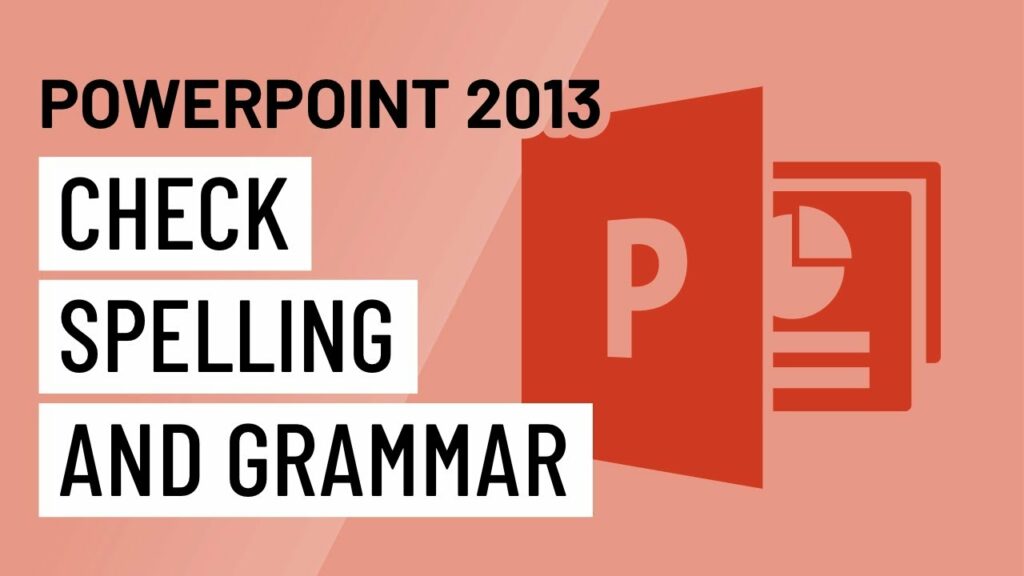Polishing Excellence: A Comprehensive Guide to Using the Spell and Grammar Check Features in PowerPoint 2013

Introduction:
Creating a compelling presentation involves not only crafting a compelling narrative but also ensuring that the text is free from spelling and grammar errors. PowerPoint 2013 provides robust spell and grammar check features to help presenters maintain professionalism and clarity in their content. In this comprehensive guide, we will delve into the intricacies of using the spell and grammar check features in PowerPoint 2013, exploring various tools, customization options, and best practices for refining the textual aspects of your presentation.
The Importance of Proofreading in Presentations:
- Professionalism: A polished and error-free presentation reflects professionalism and attention to detail, enhancing the credibility of the presenter.
- Clarity of Communication: Correct spelling and grammar contribute to clear and effective communication, preventing misunderstandings and ensuring that your message is conveyed accurately.
- Audience Engagement: An error-free presentation is more likely to captivate the audience, maintaining their focus on the content rather than distracting spelling or grammatical mistakes.
Using the Spell Check Feature in PowerPoint 2013:
- Running Spell Check:
- Procedure:
- Open your PowerPoint presentation.
- Click on the “Review” tab in the Ribbon.
- Select “Spelling” to initiate the spell check.
- Procedure:
- Reviewing Suggestions:
- Procedure:
- PowerPoint will suggest corrections for identified spelling errors.
- Click on suggested corrections to accept or manually type the correct word.
- Procedure:
- Adding Words to Dictionary:
- Procedure:
- If PowerPoint flags a correctly spelled word as an error, you can choose to add it to the dictionary.
- Right-click on the word, select “Add to Dictionary,” and PowerPoint will recognize it as correctly spelled in the future.
- Procedure:
- Skipping Words:
- Procedure:
- If you want to skip a word and come back to it later, click “Ignore Once” or “Ignore All.”
- This is useful for specialized terms or names that may not be in the standard dictionary.
- Procedure:
Using the Grammar Check Feature in PowerPoint 2013:
- Enabling Grammar Check:
- Procedure:
- Open your PowerPoint presentation.
- Click on the “Review” tab in the Ribbon.
- Select “Grammar” to initiate the grammar check.
- Procedure:
- Reviewing Grammar Suggestions:
- Procedure:
- PowerPoint will highlight sentences with potential grammar issues.
- Click on the underlined text to see suggestions and apply corrections.
- Procedure:
- Understanding Grammar Suggestions:
- Procedure:
- PowerPoint will provide explanations for grammar suggestions.
- Use these explanations to understand the nature of the error and make informed corrections.
- Procedure:
- Addressing Style Suggestions:
- Procedure:
- PowerPoint’s grammar check also includes style suggestions for improving sentence structure.
- Evaluate style suggestions and make revisions for enhanced clarity and readability.
- Procedure:
Customizing Spell and Grammar Check Options:
- Accessing Proofing Options:
- Procedure:
- Click on the “File” tab.
- Select “Options” to access PowerPoint options.
- Choose “Proofing” to customize spell and grammar check settings.
- Procedure:
- Setting Proofing Preferences:
- Procedure:
- In the Proofing options, customize settings such as language preferences, proofing exceptions, and autocorrect options.
- Adjust these settings to align with your specific proofreading needs.
- Procedure:
- Customizing Grammar Rules:
- Procedure:
- In Proofing options, click on “Settings” under the Grammar section.
- Customize grammar rules based on your writing style and preferences.
- Procedure:
Best Practices for Effective Spell and Grammar Checking:
- Multiple Rounds of Proofreading: Conduct multiple rounds of spell and grammar checks to catch errors that may have been missed in earlier reviews.
- Manual Review: While relying on spell and grammar check tools is essential, manual review remains crucial. Carefully read through the content to identify context-specific errors that automated tools may not catch.
- Consider Audience and Tone: Tailor your proofreading efforts to the intended audience and the tone of your presentation. Formal presentations may require stricter adherence to grammar rules.
- Use Professional Proofreading Services: For critical presentations, consider utilizing professional proofreading services to ensure a flawless final product.
Conclusion:
The spell and grammar check features in PowerPoint 2013 serve as invaluable tools in the presenter’s arsenal, contributing to the overall quality and professionalism of a presentation. By mastering the use of these features, presenters can confidently communicate their messages without the distractions of spelling or grammatical errors. As you embark on the journey of refining your presentations, let the principles of thorough proofreading, customization, and attention to detail guide you to slides that not only inform but also reflect a commitment to excellence. Happy presenting!





